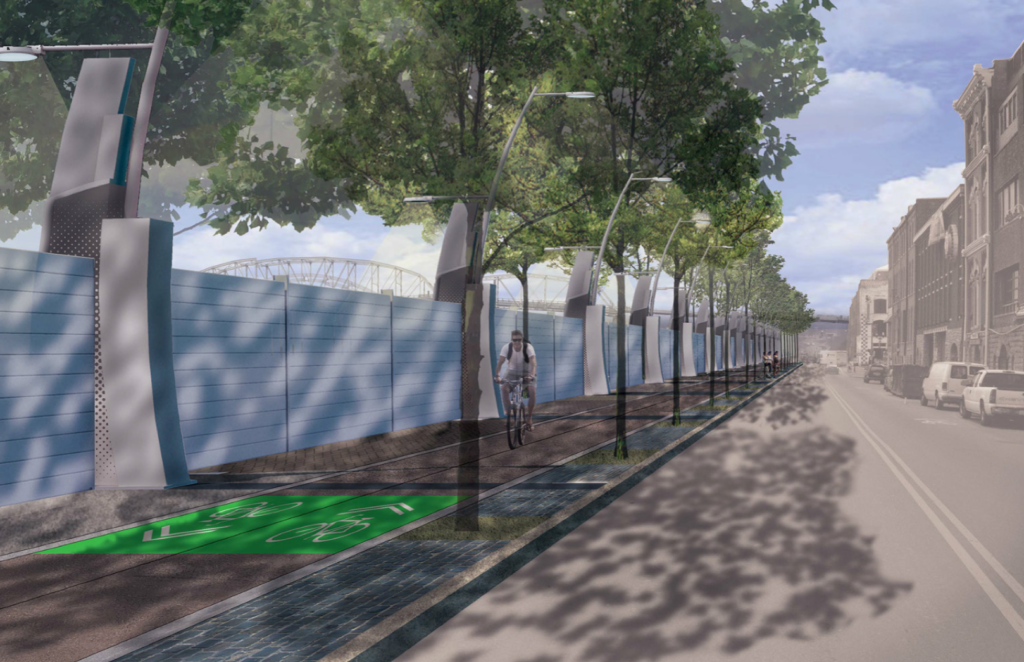
An incremental compromise was reached Tuesday night on a flood protection system for downtown Nashville.
Nearly a year ago, the Metro Council fiercely debated whether to spend $110 million dollars — and at the time, decided against it.
In the time since, Metro Water Services Director Scott Potter is no less vehement that his staff knows exactly what must be done to protect downtown from flooding like it did in May 2010.
But for a year, he says, they’ve been stuck in place.
“I mean literally, the plans are actually sitting on a shelf,” he told the Metro Council.
But, quietly, and with the backing of Mayor Megan Barry, a $110-million-dollar flood defense system again made its way into the proposed budget.
“There are lots of folks downtown who lived through a very bad flood, and absolutely wanting to be protected is something that they want, something they’ve reached out for,” Barry told WPLN on Tuesday. “We’ve had tremendous amount of impact to our businesses downtown and that also impacted our tourism industry.”
But the resurfacing of the proposal caught some off guard, and Councilman Bob Mendes filed a bill to pull $110 million out of the proposed Capital Improvements Budget (a massive document that includes hundreds of millions of dollars in ideas for Metro construction projects).
Councilwoman Angie Henderson was among those who questioned Potter for nearly 90 minutes on Tuesday.
“Because there is still a perception out there that the council is funding a $100 million unnecessary wall,” she said.
“The flood wall,” Potter responded, “is only $13 million of the entire project. It is a series of projects that have to all be built for the system to work.”
That system would include some retractable sections of wall. The most expensive parts are powerful pumps to keep downtown from taking on water.
In the end, the council wouldn’t provide full funding.
Potter’s department will get $15 million dollars to continue designing the system — but there’s no guaranteed money for actually building it.
Metro Water will also be required to hold more public meetings about flood mitigation, as several council members say they didn’t recall the 15 meetings that Potter cited in the wake of the 2010 flood.
The funding push failed last year in large part because of resistance from officials who said that other parts of Davidson County weren’t getting sufficient protections.
Barry argues that a broader plan does balance the needs between downtown and the rest of the county. She’s points out she’s also setting money aside to buy out more homes in flood-prone areas.


